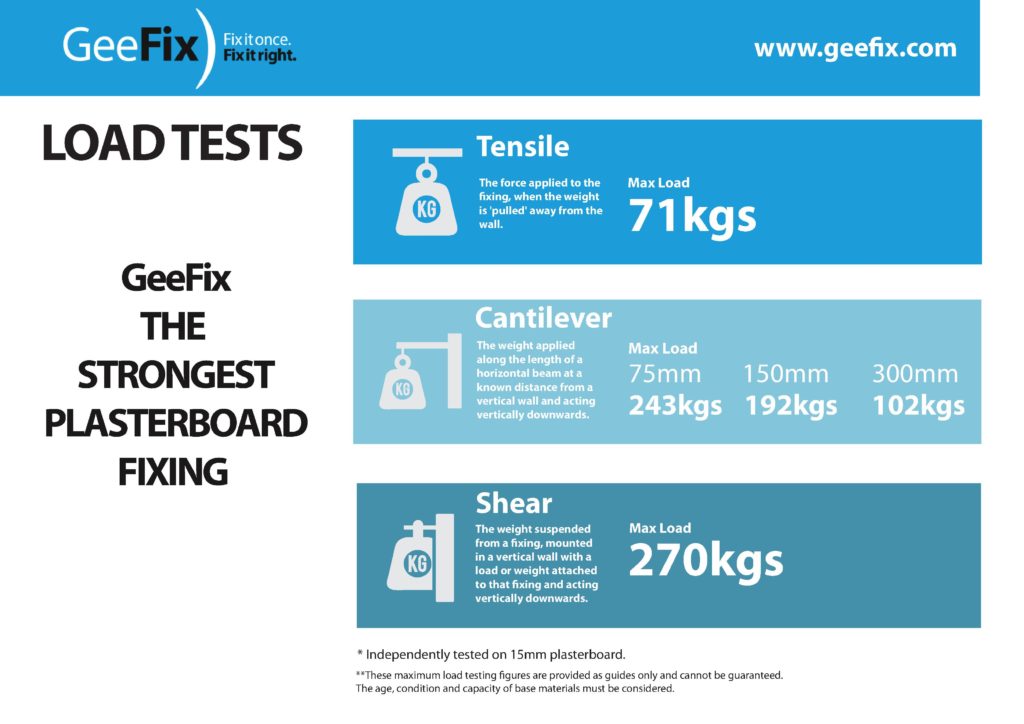From their conception, we’ve known that the GeeFix wall anchors would outperform our competitors because of their large, flat, solid load bearing back-plate. Many anchors have a hollow channel-shaped back-plate, the sharp edges of which cut into the drywall. Over time, these incisions diminish the drywall’s integrity, causing the anchor to become loose and ultimately fail. In an industry saturated with superlative claims we knew that we needed some hard data to hang our hat on (excuse the pun), so we arranged for the GeeFix wall anchors to be independently strength tested. The graphic below shows how GeeFix performed in strength tests, conducted on 5/8 inch drywall: (Click graphic to enlarge)
Heavy duty drywall anchors have to support three types of load forces: Cantilever loads (suspended away from the wall), shear loads (pulling down against the vertical surface of a wall) and tensile loads (pulling away from a wall or ceiling). Most manufacturers typically highlight the shear strength of their anchors, emboldening their claims that their product is the strongest. A drywall anchor that has a high shear strength, for example, may not be suitable for mounting a large cantilever load, such as a 32 inch flat screen television on an articulating wall mount.
So, in order to select an anchor that’s right for your installation, you need to know how the anchor performs in all three of the above categories. We hope our infographic is helpful as you navigate the wall anchor market, and feel free to shoot us an email at sales@geefixusa.com or contact us via our online submission form with any questions. We’re happy to help!


